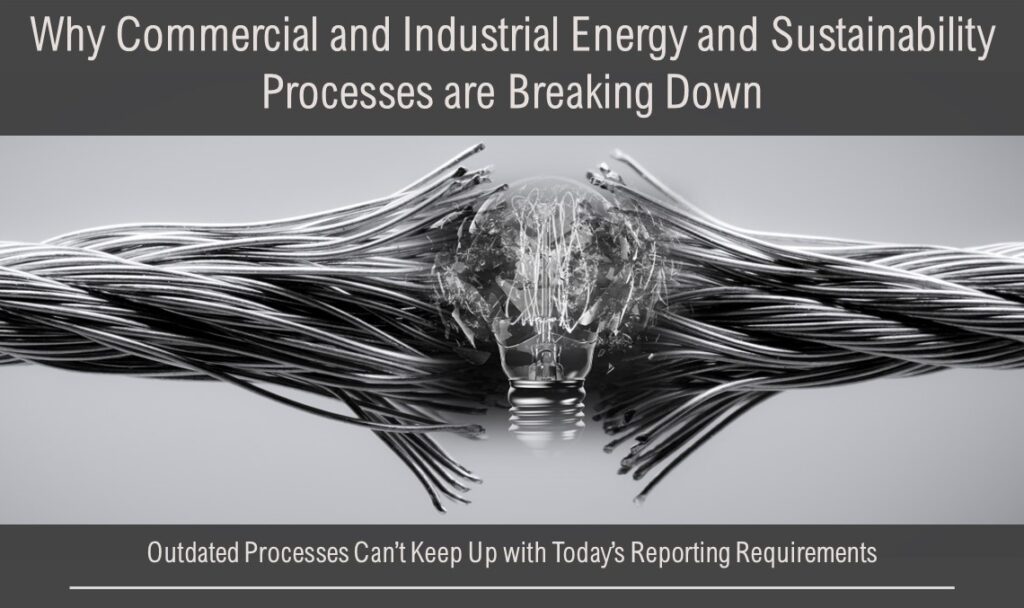
Outdated Processes Can’t Keep Up with Today’s Reporting Requirements
We have the pleasure of working with many large C&I, multi-facility clients. Even among the most sophisticated organizations, most have a piecemeal collection of accounting systems, spreadsheets, and outdated software managed by a few smart people doing the best they can with the tools they have to manually extract energy, facility, and building system data. Historically, these requirements included quarterly and annual budgets, compliance and benchmarking reports, energy efficiency studies, capital project studies, and other reporting requirements involving usage and cost. Manual processes continue to create business friction after you consider the ongoing challenge of approving, processing, and paying various utility, supplier, and commodity bills in a timely fashion to avoid late fees. Accounting systems typically capture payment details, but fail to capture accurate usage, units of measure, demand, and benchmarks – all critical aspects of multi-facility management.
Over the past few years, several factors have overstressed this disjointed system and highlighted critical needs for new systems and processes.
1- Carbon Accounting. Scope 1 and 2 emissions management should already be in place since it affects every commercial and industrial business sector. Stakeholder demands for greater energy efficiency and sustainability reporting are challenging the C-Suite.
2- Moving Toward Real-time Data. Integrating interval data from smart-meters, sub-meters, building automation and IoT has overwhelmed historical energy management systems. Think about twelve monthly data points moving to 8,760 hourly data points.
3- Distributed Energy Resources (DERs). Solar, battery, and EV charging introduce new requirements to measure, manage, and respond to real-time energy resources, demand, market and grid conditions.
4- Remote Working. Covid changed the world. The pandemic left organizations short-staffed and challenged for accessing files, records, and information previously only found in the office.
5- Energy Insecurity. After years of stable energy and utility prices, energy and commodity price volatility has returned, along with escalating water, waste, recycling and resource challenges.
Most multi-facility organizations are simply not prepared for these new requirements. We have witnessed the system stress that these challenges place on professionals who already struggle with the demands of the modern workplace.
THG Energy Solutions has designed best-in-class software and assembled a team of experienced energy and data professionals to help solve these problems for multi-facility customers:
- Electronic utility data contextualization for energy efficiency and sustainability reporting.
- Automated utility processing services to streamline utility payments.
- Auditable scope 1 and 2 greenhouse emissions data.
- Dramatically better and more actionable access to smart meter, submeter and real-time data for managing DER assets.
These services save time and money, while dramatically increasing data quality and addressing critical reporting and management requirements. Better data helps identify and implement energy efficiency and demand management savings opportunities to help justify and pay for expanded sustainability reporting requirements.
If you have not reviewed THG’s Energy Intelligence Suite, it is time to take a look.
Setup a quick and free introduction at contactus@THGEnergy.com or call give us a call at 1.877.629.2894
